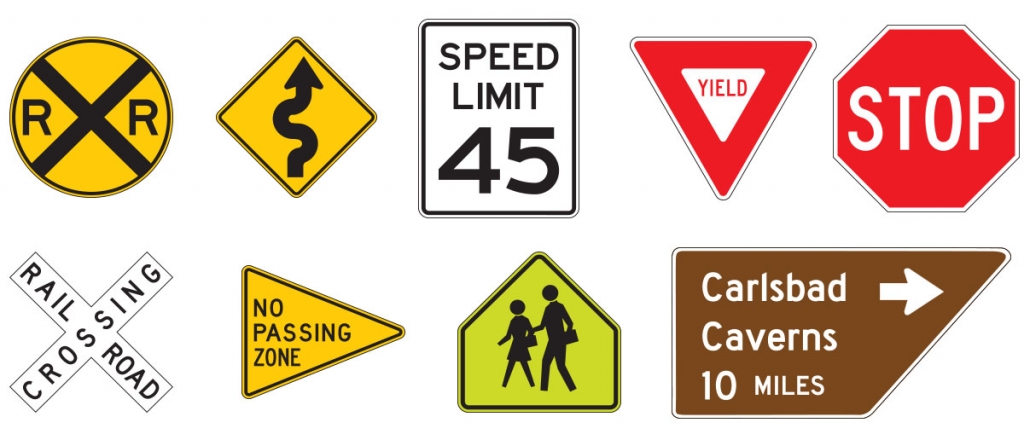Recognizing what different traffic sign shapes mean can be the difference between life and death. Here are the nine basic shapes lining roads today.
Traffic existed long before traffic signs did, as more cars on American roads started heading in different directions at different speeds. In the early 1900s, drivers navigated by looking for colored bands wrapped around poles, and in 1915, Detroit installed the first black-and-white stop sign. But in low visibility conditions, these signs just didn’t do the job.
As cars entered the mainstream, the potential for accidents became more alarming. By the 1920s, automobile organizations agreed that traffic control signs needed to be standardized so that drivers from anywhere could understand them. Shapes could instantly communicate in any language. Even if you hadn’t passed a test on what different traffic sign shapes meant, you soon realized that smoother curves were used for friendlier messages, while the jagged edges of an octagon conveyed a more urgent sense of warning.
These are the nine basic traffic sign shapes:
- Octagon: The eight-sided sign is exclusively used to mean “stop.”
- Circle: This shape is an alert that a railroad is nearby.
- Pennant: This right-pointing triangle indicates a no-passing zone.
- Pentagon: This shape, with the point upward, resembles an old schoolhouse and means that there is a school or school crossing zone ahead.
- Crossbuck: The outline of an “X” is the sign for a railroad crossing.
- A diamond shape means “warning,” and is used to warn drivers of unexpected conditions and situations, such as construction.
- Rectangle: These are regulatory and guide signs, such as speed limits and lane directions.
- Trapezoid: These signs are often brown, indicating the presence of recreational and cultural interests such as national parks or forest routes.
Knowing what different traffic sign shapes mean is the foundation of a safety system, but shapes aren’t effective unless they are built with sturdy materials, accompanied by unmistakable colors and words, and visible in all conditions. Custom Products Corporation has roots dating back to the first sign makers in the ’20s and now manufactures traffic signage all across the country. For these or any custom signs, contact us today.





